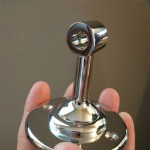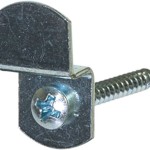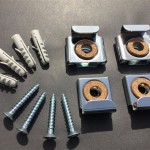Types of Mirror Carp
Mirror carp (Cyprinus carpio carpio) are a subspecies of common carp known for their distinctive scale patterns. While all carp share a common ancestor, selective breeding has led to the development of various strains, including the mirror carp, which exhibits a highly variable scale arrangement. These variations have led to the informal classification of mirror carp into different types, based primarily on the size, distribution, and number of scales.
It's important to understand that these classifications aren't scientifically formalized taxonomic distinctions. Rather, they are descriptive terms used by anglers and fish breeders to differentiate between the various scale patterns observed in mirror carp. Understanding these different types can be helpful for anglers in identifying fish and for breeders in selecting individuals for specific traits.
One common type is the **Fully Scaled Mirror**. This type can be somewhat misleading, as it doesn't necessarily mean the fish is entirely covered in scales. Instead, it refers to mirror carp with a higher number of smaller scales scattered across their body. These scales can be irregular in shape and size and may create a mosaic-like pattern. While they possess more scales than other mirror carp varieties, they are still easily distinguished from common carp, which have a uniform, fully scaled body.
The **Linear Mirror** is characterized by a row of enlarged scales running along the lateral line of the fish. These scales are typically larger and more prominent than those found on fully scaled mirrors. The rest of the body may be sparsely scaled or almost entirely devoid of scales. The linear arrangement of these prominent scales gives this type its name.
Another distinct type is the **Patch Mirror**. As the name suggests, these carp have irregular patches of scales scattered across their body. The size and location of these patches vary significantly between individuals. Some patch mirrors may have only a few small patches, while others have larger, more numerous clusters of scales. This variability contributes to the unique appearance of each individual fish.
The **Frame Mirror** carp displays a pattern of scales resembling a frame around the body. This "frame" is generally formed by a row of scales along the dorsal and ventral lines, often connecting with scales near the head and tail. The area within this "frame" is typically bare or sparsely scaled. Like other mirror carp types, the extent and completeness of the "frame" can vary considerably.
Perhaps the most visually striking type is the **Leather Carp** or **Nude Carp**. These fish possess very few scales, often limited to just a few scattered scales around the dorsal fin or near the head and tail. Their near scaleless body gives them a smooth, leathery appearance. Leather carp are highly sought after by some anglers and breeders for their unique appearance.
The variation in scale patterns within mirror carp arises from genetic factors controlling scale development. While the exact mechanisms are complex, the underlying genetic principles are similar to those responsible for scale variations in other fish species. Environmental factors, such as water temperature and diet during development, can also influence scale growth and potentially contribute to individual variations within a given genetic background.
It's crucial to remember that these different types are simply descriptive categories based on observable scale patterns. There are no strict boundaries between these types, and many individuals exhibit characteristics of multiple types. For instance, a fish might exhibit both linear and patch characteristics. This blurring of lines reinforces the fact that these are not distinct subspecies but rather variations within a single subspecies.
The diversity of scale patterns in mirror carp adds to their appeal for both anglers and fish keepers. Understanding the different descriptive types can be helpful for identifying fish and appreciating the unique characteristics of individual carp. Furthermore, this understanding can be valuable for breeders working to select for specific scale patterns and contribute to the continued development of these fascinating fish.
The ongoing interest in mirror carp and their diverse scale patterns encourages further study into the genetic and environmental factors influencing scale development. Further research could provide valuable insights into the mechanisms underlying scale formation in fish and potentially lead to a more nuanced understanding of the variations observed in mirror carp.
In addition to the aesthetic appeal, the different scale patterns in mirror carp can sometimes influence their vulnerability to parasites and diseases. While more research is needed, some studies suggest that fish with fewer scales might be slightly more susceptible to certain infections. This is an area of ongoing investigation, and further studies are required to fully understand the relationship between scale patterns and disease resistance in carp.
The classification of mirror carp types based on scale patterns is an evolving practice. As breeding continues and new variations emerge, the descriptive categories may be refined or expanded. This dynamic nature of classification reflects the ongoing fascination with these fish and the continued efforts to understand the complexities of their scale development and the genetic factors that govern it.

Mirror Carp Wikipedia

All Fishing Buy Mirror Carp Identification Habitats Methods Fish Characteristics

Mirror Carp Complete Guide With Facts And Photos Strike Catch

Differences Between Common Carp And Mirror Stock Photo Adobe

Mirror Carp Cyprinus Carpio Ultimate Guide Fish Laboratory

A Short Breakdown Of The Diffe Carp Species Angling Lines Blog

Crossing Procedure Appearance Of 2ncoc 2nbsb And Their Offspring Scientific Diagram

Mirror Carp Species Spotlight Fishing Holidays Sportquest

Mirror Carp Complete Guide With Facts And Photos Strike Catch

Performances Of The Hybrid Between Cyca Nucleocytplasmic Fish And Tered Mirror Carp In Diffe Culture Environments Scientific Reports








